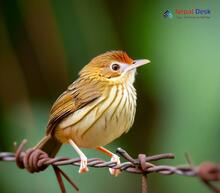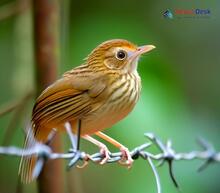Our world is home to a plethora of incredible bird species, many of which capture our imagination with their stunning beauty and captivating behaviors. One such group that often flies under the radar is the fascinating Mixornis genus of birds. In this article, we will delve into the unique features of these birds by exploring their evolution, taxonomy, morphology, ecology, species list, and existence in the alluring terrain of Nepal.
Evolution and Taxonomy
The Mixornis genus belongs to the family Timaliidae (Babblers), part of the larger order Passeriformes (perching birds). Although the exact lines of evolution are still being studied by experts worldwide, it is evident that Mixornis birds have strong connections to other passerines within Asia. The intricate web of their evolution is an ongoing focus for ornithologists dedicated to understanding these enchanting creatures.
Morphology
Mixornis birds typically exhibit small to medium-sized bodies, with short wings and tails. Their plumage is generally an earthy blend of browns and grays, which allows them to blend seamlessly into their natural habitats. Although not as colorful as some other bird species, the subtle beauty in their feathers can still be appreciated by those who take the time to observe them closely.
Ecology
These elusive birds prefer to live in dense forest habitats where they have adequate cover from potential predators. They are primarily insectivorous but may also consume small fruits and seeds on occasion. Being quite social in nature, Mixornis birds are often found in mixed-species flocks engaging in a variety of vocalizations as a means of communication.
Species List
The Mixornis genus consists of several species which include:
1. Grey-faced Tit-Babbler (Mixornis kelleyi)
2. Rufous-headed Babbler (Mixornis rubricapilla)
3. Striped Tit-Babbler (Mixornis gularis)
4. Red-eyed Babbler (Mixornis ruficollis)
Each of these species exhibits its own unique behaviors, appearances, and habits, further adding to the rich tapestry of diversity within the Mixornis genus.
Existence in Nepal
Nepal boasts a rich array of birdlife due to its varied landscapes and altitudinal changes, making it a paradise for birdwatchers and ornithologists alike. Several Mixornis species can be found throughout the country, taking refuge in Nepal's lush forests and contributing to the region's immense biodiversity.
In conclusion, the Mixornis genus captivates us with its understated elegance, intriguing evolution, and ecological importance. As we deepen our appreciation for these incredible birds, it serves as a reminder that even the smallest creatures hold an essential role within our shared ecosystems.




